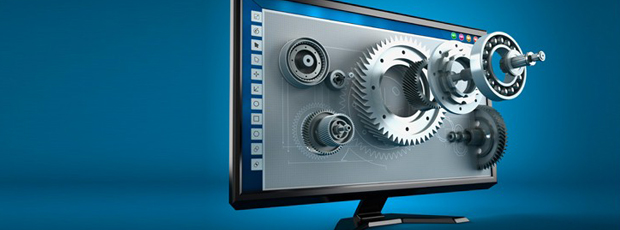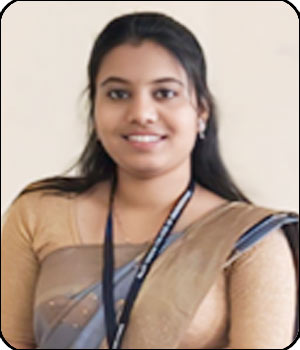Department of Computer Engineering
| |
Ms. Unde Suvarna P. |
About Department:
Welcome to the department of Computer Engineering. It is started in 2012. Computer engineering is defined as the discipline that embodies the science and technology of design, construction, implementation, and maintenance of software and hardware components of modern computing systems and computer-controlled equipment. Computer engineering has traditionally been viewed as a combination of both computer science (CS) and electrical engineering (EE). It has evolved over the past three decades as a separate, although intimately related, discipline. Computer engineering is solidly grounded in the theories and principles of computing, mathematics, science, and engineering and it applies these theories and principles to solve technical problems through the design of computing hardware, software, networks, and processes.
Historically, the field of computer engineering has been widely viewed as "designing computers." In reality, the design of computers themselves has been the province of relatively few highly skilled engineers whose goal was to push forward the limits of computer and microelectronics technology. The successful miniaturization of silicon devices and their increased reliability as system building blocks has created an environment in which computers have replaced the more conventional electronic devices. These applications manifest themselves in the proliferation of mobile telephones, personal digital assistants, location-aware devices, digital cameras, and similar products. It also reveals itself in the myriad of applications involving embedded systems, namely those computing systems that appear in applications such as automobiles, large- scale electronic devices, and major appliances.
Departmental Laboratories:
- Computer Graphics Lab.
- Internet and Project Lab.
- Software Lab I.
- Software Lab II.
- Software Lab III.
- Software Lab IV.
- Hardware Lab I.
- Hardware Lab II.
- Microprocessor Lab.
- Computer Design Lab
Vision
To impart quality education for producing highly talented globally recognizable technocrats and entrepreneurs with sound ethics, latest knowledge, and innovative ideas in Computer Engineering to meet industrial needs and societal expectations.
Mission
- To impart high standard value-based technical education in all aspects of Computer Engineering through the state of the art infrastructure and innovative approach.
- To produce ethical, motivated, and skilled engineers through theoretical knowledge and practical applications.
Courses Offered
Sr. No. |
Name of the Course |
Intake |
Current Intake |
1 |
F.E. (Computer Engineering) |
120 |
2023-24 |
2 |
S.E. (Computer Engineering) |
120 |
2024-25 |
Departmental Library
With the central library, the department has a separate departmental library consisting of more than 150 titles. It has a good collection of academic as well as management and soft skills books.
List of Software installed:
All Microsoft licence Software (Microsoft Developer Network Academic Alliance.)
Example: .Net, SharePoint, Office, MSSQL, etc. and Software languages like C, C++, etc. Application Software’s like Adobe Software, Open-Office
Fundamentals of Programming Language Laboratory:
A programming language is an artificial language designed to communicate instructions to a machine, particularly a computer. Programming languages can be used to create programs that control the behaviour of a machine and/or to express algorithms precisely. The description of a programming language is usually split into the two components of syntax (form) and semantics (meaning). Some languages are defined by a specification document (for example, the C programming language is specified by an ISO Standard), while other languages, such as Perl 5 and earlier, have a dominant implementation that is used as a reference.
Lab consist of 60 PC’s, having Configuration: Desktop PC with Intel core i5 processor 3.07 GHz, 4 GB RAM, 520 GB HDD, Dual Boot Ubuntu 11.04.
Object Oriented Programming Laboratory:
Object-oriented programming (OOP) is a programming paradigm using "objects" – data structures consisting of data fields and methods together with their interactions – to design applications and computer programs. Programming techniques may include features such as data abstraction, encapsulation, messaging, modularity, polymorphism, and inheritance. Many modern programming languages now support OOP, at least as an option. Lab consists of Turbo C Software and 20 PC’s, having Configuration: Desktop PC with Intel core i5 processor 3.07 GHz, 4 GB RAM, 520 GB HDD.
Graphics and Multimedia Laboratory:
Multimedia is media and content that uses a combination of different content forms. The term can be used as a noun (a medium with multiple content forms) or as an adjective describing a medium as having multiple content forms. The term is used in contrast to media which use only rudimentary computer display such as text-only or traditional forms of printed or hand-produced material. Multimedia includes a combination of text, audio, still images, animation, video, or interactivity content forms. Multimedia is usually recorded and played, displayed or accessed by information content processing devices, such as computerized and electronic devices, but can also be part of a live performance. Multimedia (as an adjective) also describes electronic media devices used to store and experience multimedia content. Multimedia is distinguished from mixed media in fine art; by including audio, for example, it has a broader scope. The term "rich media" is synonymous for interactive multimedia. Hypermedia can be considered one particular multimedia application. Lab consist of 20 PC’s, having Configuration: Desktop PC with Intel core i3 processor 3.07 GHz, 2 GB RAM, 500 GB HDD. Projector: MITSUBISHI DLP Projector (Model ES 200U)
Data Structure Laboratory:
In computer science, a data structure is a particular way of storing and organizing data in a computer so that it can be used efficiently. Different kinds of data structures are suited to different kinds of applications, and some are highly specialized to specific tasks. For example, B-trees are particularly well-suited for implementation of databases, while compiler implementations usually use hash tables to look up identifiers. Data structures are used in almost every program or software system. Data structures provide a means to manage huge amounts of data efficiently, such as large databases and internet indexing services. Usually, efficient data structures are a key to designing efficient algorithms. Some formal design methods and programming languages emphasize data structures, rather than algorithms, as the key organizing factor in software design. Lab consist of 20 PC’s, having Configuration: Desktop PC with Intel core i5 processor 3.07 GHz, 5 GB RAM, 520 GB HDD.
Digital Laboratory:
Digital electronics represent signals by discrete bands of analog levels, rather than by a continuous range. All levels within a band represent the same signal state. Relatively small changes to the analog signal levels due to manufacturing tolerance, signal attenuation or parasitic noise do not leave the discrete envelope, and as a result are ignored by signal state sensing circuitry. In most cases the number of these states is two, and they are represented by two voltage bands: one near a reference value (typically termed as "ground" or zero volts) and a value near the supply voltage, corresponding to the "false" ("0") and "true" ("1") values of the Boolean domain respectively. Digital techniques are useful because it is easier to get an electronic device to switch into one of a number of known states than to accurately reproduce a continuous range of values. Digital electronic circuits are usually made from large assemblies of logic gates, simple electronic representations of Boolean logic functions.
Microprocessor Laboratory:
Electronics and Telecommunication department provides microprocessor lab. This lab is used in microprocessor course for the students E & TC streams. This lab deals with programming of microprocessor over simulator kits. This lab has 8085 microprocessor kits which are to be programmed by students. In this lab we have ten kits of 8085 microprocessor, ten kits of 8086 advanced microprocessor kit Number of digital signal Kits: 15
*****






Stay Up to Date With Whats Happening